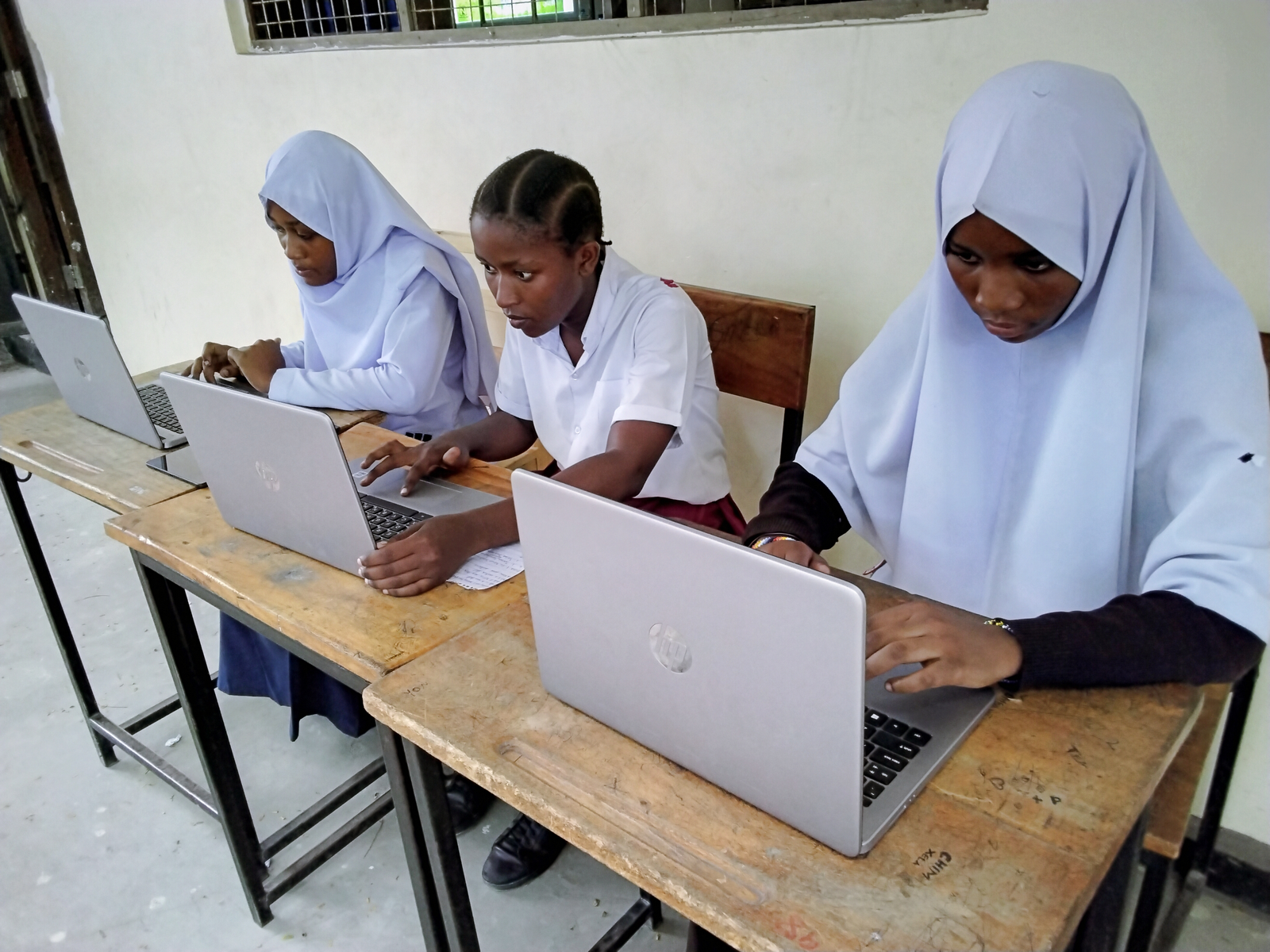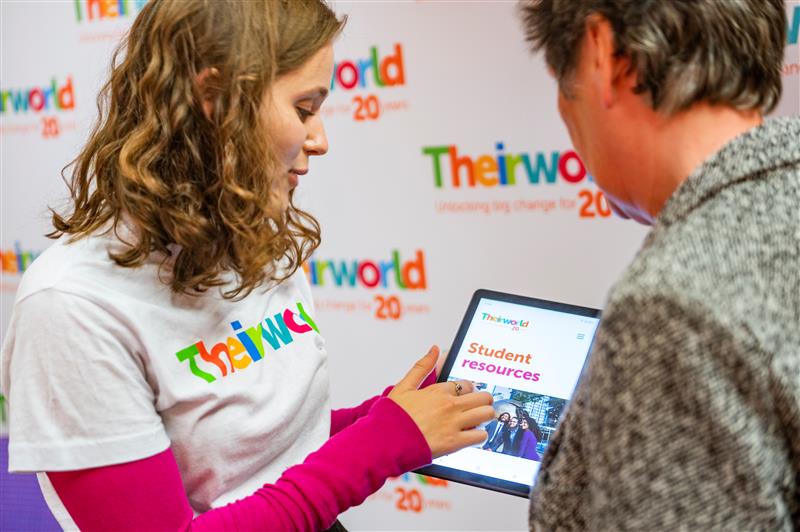
What is the GPE and why does it need $3bn to help 870m children?
Barriers to education, Early childhood development, Education funding, Girls' education, Right to education, Teachers and learning
Find out why a gathering in Senegal of donors, leaders, philanthropists and global organisations will be crucial to education in more than 60 countries.
One week from today, the eyes of the education world will turn to Dakar.
In Senegal’s coastal capital city, the organisation that supports schooling in developing countries hopes to raise $3.1 billion from international donors.
The Global Partnership for Education (GPE) needs the money to support its work for the next three years. Commitments announced in Dakar on February 2 will help the education of 870 million children in more than 60 countries that are home to three-quarters of the world’s out-of-school population.
It’s the first big event in a crucial year for education. United Nations agencies also need their education work financed, as does the Education Cannot Wait fund for schooling in humanitarian emergencies.
Then the G20 countries have the opportunities to see in the new International Finance Facility for Education that could unlock $10 billion a year to help get millions of children into school.
Canadian Prime Minister Justin Trudeau has kick-started the GPE funding drive by pledging to give an extra $180 million during the period 2018-21.
“Canada is committed to making sure young people around the world, especially girls, get an education,” Trudeau told the World Economic Forum in Davos yesterday. “Empowering women through education is an essential pathway toward success.”
As part of our #5for5 campaign on early childhood development, Theirworld is calling for 10% of GPE’s funding to be spent on pre-primary education.
This is in line with our call for countries to spend 10% of their education budgets on pre-primary and donors to do likewise with humanitarian aid for education.
As she prepared for the conference, GPE Board Chair Julia Gillard said: “We hope for a silver bullet to address the greatest global challenges of our time, yet we already have one. Education.”
Watch a message from Gordon Brown, the UN Special Envoy for Global Education…
There is no greater investment in our future than investment in the education of our children. I urge world leaders to support the @GPforEducation and #FundEducation now – GB pic.twitter.com/o2dEObvmAI
— Gordon Brown (@GordonBrown) January 22, 2018
Justin van Fleet, Director of the Education Commission and Senior Advisor to Theirworld, said: “In order to deliver on Sustainable Development Goal 4 (inclusive and quality education for everyone), we need to collectively mobilise – countries, donors and philanthropy alike – $3 trillion annually by 2030.
“The GPE replenishment is our first opportunity to say that education is now the priority of this generation – and we will make sure no country is left behind due to lack of resources. It is the kick-off moment for the year of education.
“We can also expect the business community to step up in new an innovative ways to support the GPE partner countries, the way pharma did through GAVI and the Global Fund.”
The conference will be addressed by Mohamed Sidibay, who is one of Theirworld’s network of Global Youth Ambassadors. A former child soldier in Sierra Leone, Mohamed went on to become a teacher in Colombia and is a member of the Education Commission’s Youth Panel.
To learn more about GPE, why the funding is so vital and what key figures are saying about it, read on…
What is the GPE?
It is a global partnership and funding organisation that works with some of the world’s poorest countries – mobilising financing for education and supporting them to build effective education systems.
What is the financing conference?
The GPE wants to raise $3.1 billion from international donors to replenish its funds and support its work for the next three years. The commitments made at the conference on February 2 will support the education of 870 million children in more than 60 developing countries that are home to 78% of the world’s out-of-school population.
The GPE says it will enable an extra 19 million children to complete primary school and 6.6 million to finish secondary school, train 1.7 million teachers, build 23,800 classrooms and distribute 204 million textbooks.
The conference is being co-hosted by the governments of Senegal and France and will bring together donor and developing country governments, the private sector, philanthropic foundations, civil society and international organisations.
The GPE’s Financing Conference is our first opportunity to turn political commitment into tangible support. Antonio Guterres, UN Secretary-General
Why is more education funding needed?
The global goal is for every child in the world to have a quality education by the year 2030. But there is a massive gap between today’s $1.2 trillion in annual education spending and the $3 trillion level needed in low- and middle-income countries by 2030. That gap needs to be closed.
What do developing countries do themselves for education?
The vast majority – 88% – of funds for education in the developing world already comes from those countries.
But they still need to increase their spending on education – and spend that money effectively. The GPE, campaigners and experts are calling on developing countries’ leaders to increase education spending to at least 20% of their total national budgets.
At least 10% of that should go towards funding pre-primary education and ensuring every child has access to at least two years of free, quality pre-schooling.
85% of children in low-income countries do not have access to pre-primary education. That leaves them at risk of being left behind, dropping out of school and not getting the skills they need to fulfil their potential.
But even if those countries do all they can, a sizeable gap remains for the international community to fill.
All children everywhere should be afforded the opportunity of a quality education. Singer Rihanna, GPE Global Ambassador
So will the GPE replenishment help to fill that gap?
The GPE will make an important contribution which will provide necessary funds to the poorest countries. But much more needs to be done if every child in every country is to be in school and learning, to bridge the anticipated $37 billion gap in 2020.
The GPE conference is the first of three major opportunities in 2018 to invest in education:
- The GPE needs the $3.1 billion to fund its work in developing countries from 2018 to 2020
- The Education Cannot Wait fund for education in humanitarian emergencies – including conflicts and natural disasters – needs $383 million of funding for next year
- An International Finance Facility for Education (IFFEd) – which has been backed by the G20 – must be launched to release $10 billion of additional funding each year by 2020
The Holy Father prays that this encounter may strengthen efforts to provide an integrated education for children throughout the world, especially those affected by conflict, famine and inequality. The Vatican, on behalf of Pope Francis
Are any developing countries investing 20% of their budget in education?
According to GPE’s latest figures from 2016, 78% of partner countries have either maintained their education budget at or above 20% of public expenditure – or increased their education budget in the year 2015.
One example is conference co-host Senegal. With GPE support since 2006, it has increased its investment in education to 24% of its domestic spending.
Many sub-Saharan countries including Benin, Niger, Senegal, and Ghana have committed to increase investment in education.
When world leaders gather for a pivotal education financing summit in Dakar on February 2, they must deliver. Our collective security and prosperity depend on it. David Oyelowo, actor, producer and education champion
What else can poorer countries do?
Governments should take the lead in funding education by setting investment targets and improving how the funding is spent to make it most effective.
They should commit to improvements right across their education systems – from basic monitoring, community involvement and accountability to in-service training and materials for better teaching.
They should develop large-scale student assessments, improve internet access and increase the use of digital technology.
Governments must also target their education spending on what works most effectively for girls’ education, the inclusion of children with disabilities, those from minority backgrounds, children living in poverty and those affected by conflict.
More news

